#Estonian folklore
Text

Tempestuous spirits of devastating winds. A raging wind that tears at the land around it with terrible strength.
#BriefBestiary#bestiary#digital art#fantasy#folklore#legend#myth#mythology#estonian folklore#estonian legend#ebajalg#wind spirit#whirlwind#demonic wind#vihur#tuulispask#undead#magic
23 notes
·
View notes
Text
i should use estonian folklore in my stuff more this stuff is so awesomesauce. i need to find that leaflet my lit teacher gave me....
1 note
·
View note
Photo
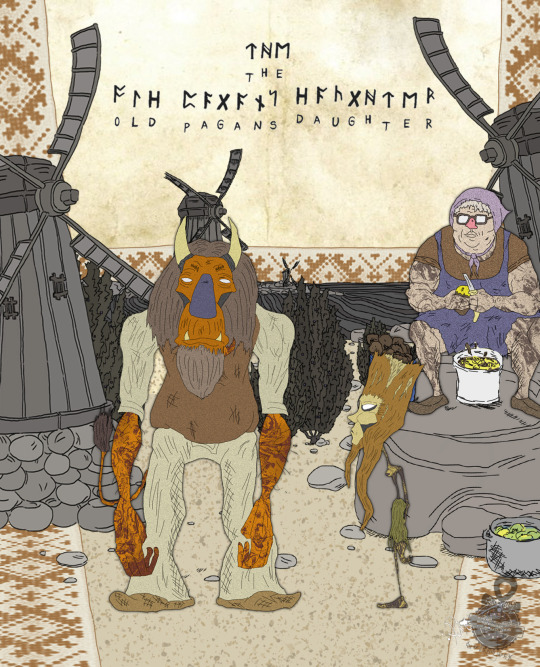
the Old Pagans Daughter - These Characters & the Idea was formed when I lived in England in 2015-16.. So it's a Quite very old idea or concept to me :)
My idea - As Usual & the First - was an Animated Short FIlm with this, But... Also a possible book -Maybe- :D Stories would've gotten their Influence from Estonian folklore or such - in a way - prolly :)
The Main storyline would've circled around the Adventures of the Old Pagans Daughter, which he makes from an old Tree-Stumpy Log, he discoveres while chopping the wood. Goes to the Forrest Witch with it, so She could turn it into a Daughter of his.. Of course there are certain deals & a hook... around that Wish to be granted...
But the Old Pagan, gets his wish & makes the Potato Peelin Grandma happy, that the Old Man has a kid now... But... There's Silly-Strange-Weird Trouble ahead... Cause' If I remember correctly, then the Daughter would've been a Teenager.. So Yeh... Troubel indeed :P :D
But yeh... Who know.. Maybe one day I'll do Something with it.. :DD Needs a Lot of Redesign for Sure! :D Cause' I'm not that Häppi with this First Design Line :) :D
#old pagan#vanapagan#old pagans daughter#daughter#teenager#grandma#potato peeling#saaremaa#estonian folklore#etno#estonian#pagans#ristoky#book#book art#illustration#book illustration#nft#nft art#digital art#folklore#folktales#england#eesti#animation#risto kütt#cartoon
4 notes
·
View notes
Text
The crimson-faced creature awakened in his subterranean lair, stretching luxuriantly like a cat and uttering a thunderous yawn.
Vanapagan’s eyes fluttered open, the left one - the one with two irises and two pupils - looking in different directions. A shiver ran along his spine, the short, sleek coat of fur covering his body standing on end for a moment, almost seeming to ripple as his body shook.
His growling stomach begged for food. Vanapagan sniffed at the air curiously. There was something passing by in the world above. An excited grin stretched across his face. His long tongue ran delicately across his lips. Meat. Fresh meat. His prehensile tail wagging in ecstatic anticipation, the demon began to burrow upwards, upwards, upwards, out into the world.
#creative writing#suur toll#Vanapagan#just a smol bit of prose I came up with on the spot#rekindling my love for this scrunkly little dude#demon#Estonian folklore
0 notes
Text
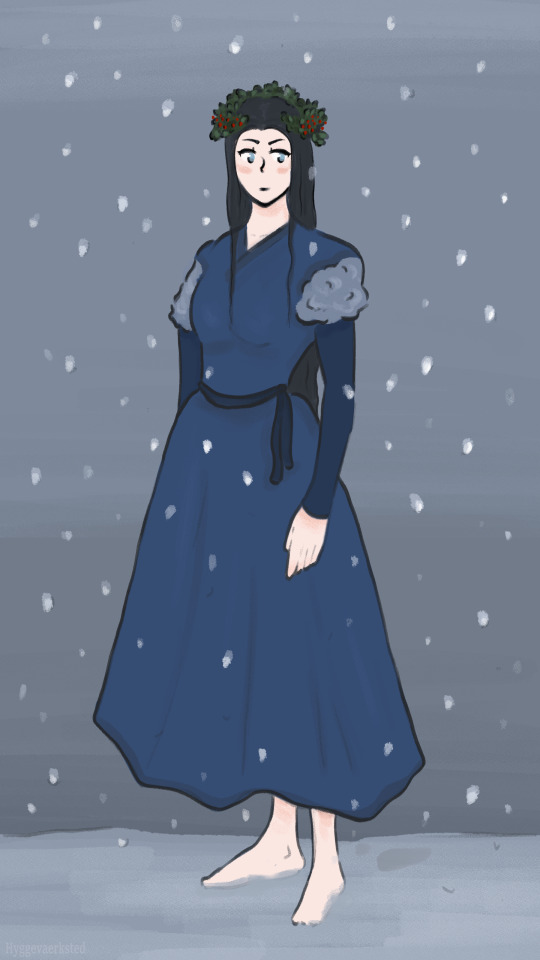
Jeg ønsker dig en glædelig juletid!! Enjoy the upcoming holidays <3
1 note
·
View note
Text

[Photo above by: Ossi Saarinen]
Legends and myths about trees
Forest myths, Estonian traditional beliefs (6)
The world of the Estonians’ ancestors – Metsik, the forest elves
Metsik is the elf of the woodlands. According to ancient Estonian folklore, Metsik were wood elves who lived everywhere there were trees, from coniferous woodlands to shallow swamp forests. When Metsik appears to people, they assume the appearance of a bird, a wild animal, or a beautiful tree. A singing bird who truly is Metsik sings songs that humans can understand. They can also understand the language of the aspen tree that rustles in the wind for that aspen tree is Metsik.
If birdsong is heard, it may be a Metsik singing. People can hear Metsik in an aspen tree that rustles in the wind. Metiks are the guardian spirits of the forest. They do not approve of cutting down trees, bonfires and, above all, waste dumping. When people enter the forest with cruel intentions, Metik misleads them away from their sacred home.

木にまつわる伝説・神話
森の神話・エストニアの民間伝承 (6)
エストニア人の祖先の世界 〜 森の妖精メツィク
メツィクは森の妖精である。古代エストニアの民話によれば、メツィクは針葉樹林から浅い沼沢林まで、木があるところならどこにでも住んでいた森の妖精である。メツィクが人々の前に現れるとき、彼らは鳥や野生の動物、あるいは美しい樹木の姿をとる。本当にメツィクである歌う鳥は、人間が理解できる歌を歌う。また、風にそよぐアスペンの木の言葉を理解することもできる。
鳥のさえずりが聞こえたら、それはメツィクが歌っているのかもしれない。人々は風にそよぐアスペンの木からメツィクの声を聞くことができる。メツィクは森の守護霊である。彼らは木を伐採したり、焚き火をしたり、とりわけゴミを捨てることを認めない。人々が悪意を持って森に入ると、メツィクは彼らを神聖な家から遠ざけるよう惑わす。
#trees#tree legend#tree myth#folklore#mythology#legend#estonian mythology#metsik#forest guardian#forest elf#aspen trees#woodlands#nature#art#forest fairy
192 notes
·
View notes
Text
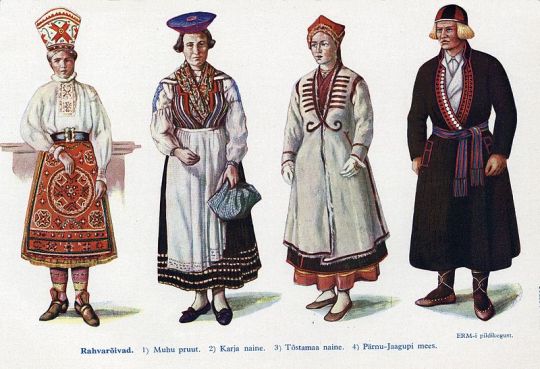

Estonian Folk Costumes
112 notes
·
View notes
Text




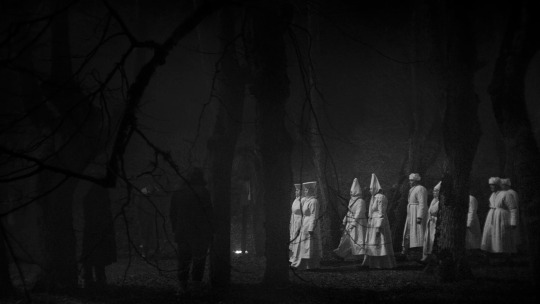





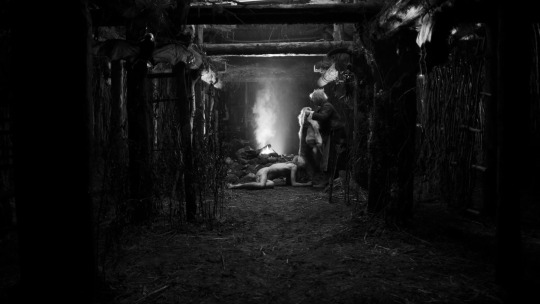




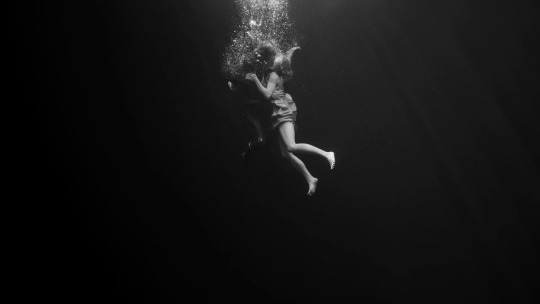
November (2017) dir. Rainer Sarnet
#november#rainer sarnet#estonian film#film#fantasy#folklore#film screencaps#movie screencaps#my screencaps#wolf#werewolf#kratt
5 notes
·
View notes
Text
Planning out this presentation and realizing that it allows me to talk about kratid... be still my weird folklore loving heart
1 note
·
View note
Text
List of impact craters on Earth
some light reading for you
#chicxulub my beloved#but the kaali craters get a special mention for apparently being recorded by estonian folklore
1 note
·
View note
Photo

Map of werewolf witch trials
by subthings2
Mapping the location of 223 witch trials that included accusations of turning into a wolf, mostly based on Lorey's online list (just under 200 listed). Blécourt gives a few corrections to Lorey's list, Klaniczay has 13 Hungarian trials, and Madar, Metsvah and Winkler collectively give 14 Estonian trials; Metsvah says there are 30 recorded in Estonia in total, but data on the rest weren't provided. When a location has multiple trials, the crosses form a circle around the city so as to not overlap - this is most obvious for Tallinn, Riga, and Sopron.
The initial point was to visualise how the trials spread over time, but what it also makes really obvious is how tightly clustered most of them are - this matches how regional the witch trials in general were, but also that beliefs in werewolves weren't evenly spread across Europe; hence the lack of anything in Great Britain, Basque Country, but weirdly also Scandinavia where southern Sweden is known for having a decent number of werewolves in its folklore.
Finally, after going through all of Lorey's descriptions, there's a few that stood out that I wanted to share (machine translated from German):
1619 Tonnis Steven von Grevenstein, shepherd in Kallenhardt (Electoral Cologne Office of Rüthen). “Out of pain and unbearable torment, I had to say that I was a magician and a Wehrwolf, but God in heaven knows that everything is a lie and I have never seen a devil in my life.”
1652 Wilhelm Scheffern, shepherd from Metterich (di Metternich near Münstermaifeld, Kurtrier). One of the reasons he was talked about was because - in contrast to his successors - there were never any losses due to wolf attacks during his time as a shepherd. "It is entirely believed that the defendant could turn himself into a werewolf" (6th count) and "that he ... once made himself invisible in the field" (point 15). However, previously in points 2 and 3 "that his "The father was burned because of the vice" and "that the defendant's sisters were burned years ago because of the vice of magic." (Court verdict not received; according to Krämer, however, probably executed.)
1661 Cuno Jung, a shepherd from Westerburg, had not defended himself strongly enough against being called a werewolf. Because his parents were already under suspicion and his sister had been executed as a witch, he spoke out against the witchcraft trials. He also refused to take part in an execution as a lay judge. He once even tried to buy his way out as an observer at a witch trial. Executed in Westerburg.
there's also the WAR WLF of Lemgo, featuring this funky little guy that's also had several people write about the rather unfunky little trial
the single case aaaall the way up in Finland is Erkki Juhonpoika
Sources:
Willem de Blécourt, ‘The Differentiated Werewolf: An Introduction to Cluster Methodology’, Werewolf Histories (2015), pg 7
Gábor Klaniczay, Bengt Ankerloo & Gustav Henningson (ed.), ‘Hungary: The Accusations and the Universe of Popular Magic’, Early Modern European Witchcraft: Centres and Peripheries (1993) pg 254, footnote 122
Elmar Lorey, ‘Werwolfprozesse in der Frühen Neuzeit’, http://www.elmar-lorey.de/prozesse.htm (2000)
Maia Madar, Bengt Ankerloo & Gustav Henningson (ed.), ‘Estonia I: Werewolves and Poisoners’, Early Modern European Witchcraft: Centres and Peripheries (1993), pg 270-271
Merili Metsvah, Willem de Blécourt (ed.), ‘Estonian Werewolf History’, Werewolf Histories (2015), pg 210 & footnote 25
Rudolf Winkler, ‘Uber Hexenwahn und Hexenprozesse in Estland wahrend der Schwedenherrschaft’, Baltische Monatsschrift, 67 (1909), pg 333-4
175 notes
·
View notes
Text
Estonian ghost stories and folklore
Estonia, with its rich folklore and history, has its share of ghost stories and supernatural legends. Here are a couple of Estonian ghost stories:
The White Lady of Haapsalu Castle: Haapsalu Castle is one of Estonia's most famous historical sites. It's said to be haunted by the White Lady, a ghostly apparition of a noblewoman who died in the castle. She's often seen wandering the corridors and looking out the window
The Flying Dutchman of Vormsi Island: Vormsi Island is known for its maritime history. According to local legend, the ghostly ship of the Flying Dutchman has been spotted around the waters of the island. The spectral ship is said to be a harbinger of storms and bad luck for sailors.
The Church Ghost of Pühalepa: In the village of Pühalepa on Hiiumaa Island, there's a story of a ghostly churchgoer. People have reported hearing footsteps and seeing an apparition in the local church. The ghostly figure is said to be a woman who continues to attend services in the afterlife.
The Cursed Bell of Pöide Church: Pöide Church, located on Saaremaa Island, has a cursed bell. According to legend, the bell was stolen by pirates, and a curse befell those who took it. The bell was eventually returned, but its haunting toll can still be heard at times.
The Devil's Wedding in Vana-Vigala: In Vana-Vigala, there's a legend about a sinister event known as the Devil's Wedding. It's said that every year, the devil himself and all his underlings gather for a macabre wedding ceremony. Anyone who stumbles upon this eerie event may meet a terrible fate.
Estonian folklore is a rich and diverse tapestry of legends, myths, and traditional beliefs that have been passed down through generations. Here are some key aspects of Estonian folklore:
Nature Spirits: Estonian folklore is deeply connected to nature, and various spirits and creatures are believed to inhabit the forests, lakes, and meadows. These include the spirits of trees, water nymphs, and forest elves. It's common to see an appreciation for nature's beauty in Estonian folk tales.
Mythical Creatures: Folklore is filled with mythical creatures, such as the "kratt" or "krabat," which is a supernatural being created through a pact with the devil. Kratts were often used to perform various tasks but could be mischievous and hard to control.
The Kalevipoeg Epic: Estonia's national epic, "Kalevipoeg," is a heroic poem that's often compared to the Finnish epic "Kalevala." It tells the tale of Kalevipoeg, a hero with extraordinary strength, and his adventures in ancient Estonia. The epic is a treasure trove of Estonian mythology and cultural heritage.
The Night of Ancient Lights: "Muistse Valguse Öö" is a tradition in which people gather on the summer solstice to celebrate and connect with ancient Estonian customs. It's a time of bonfires, singing, and paying homage to the country's historical roots.
Runo Songs: Estonia has a strong tradition of runo songs, which are short, rhyming folk songs. These songs are often used to pass down stories and wisdom through music and poetry. The "regilaul" tradition of singing runo songs was recognized by UNESCO as a masterpiece of oral and intangible heritage of humanity.
The Legend of the Saaremaa Women: One popular Estonian legend tells the story of the strong and independent women of Saaremaa, an island off the western coast of Estonia. According to the legend, the men were often away at sea, so the women had to manage the farms and households. This legend reflects the historical role of women in Estonian society.
Witches and Magic: Like many European cultures, Estonia has a tradition of witches and folk magic. Witches, both good and evil, are recurring characters in Estonian folklore. The country's forests and bogs are often depicted as places of magic and mystery.
Estonian folklore is an essential part of the country's cultural identity and has played a role in shaping its national character. It's a world of enchanting stories, mythical creatures, and a deep connection to the land and nature.
All of the explanations I write about may end up being in my book, so when it's completed you can look out for these elements.
#writers on tumblr#writing#writeblr#writers and poets#writerscommunity#writer things#writerblr#books#adventure#unexplained#ghost story#ghost ghouls#ghost hunter#ghost hunting#ghost stories#ghosts#got ghost#ghost#nameless ghouls#estonia#folklore#eras
33 notes
·
View notes
Text
I saw the Eurovision preshow today (literally where I live how could I not) and this was such a good semi final here are my thoughts:
Croatia: Of course a vibe, anti war, very Eurovision, fuck Putin, so glad it got through
Moldova: interesting, nice folklore vibe, maybe not the most interesting when only listening vut good
Switzerland: I found this song so... Western. Singing about not wanting to be a soldier when you absolutely don't have to be and Ukrainians are fighting for their land and freedom? I don't think it came across well at all and was not a fan
Finland: Honestly, I know everyone loves these guys but I think they're... Okay. Funny as an Estonian too hear the Finnish fulfill the stereotypes and sing about drinking.
Czech Republic: love them, I'm partially Czech so might be biased but I really like this song, powerful message with a cool performance - a bit girlboss sounding but o let it pass
Israel: so boring hope did this get through
Portugal: fun, why not
Sweden: worse live than on TV, music video in a box (or a toastie Machine according to British commentators) sure the song was powerfully sang but ugh
Serbia: didn't like it as much as last year's but at least it was interesting, I too want to sleep through al the horrors
Norway: I love this one, every time I listen to it I like it more
Malta: this was a fun song they deserved better
Latvia: ... I'm so sorry I didn't like it much, still far better than some others
Ireland: poor Ireland, this was some very Eurovision singing (we all come together and glitter) I think they deserve better
Azerbaijan: cute
Netherlands: no
Overall I'm happy with the results though, was certainly an experience
14 notes
·
View notes
Text

Day 4 - folklore
Look I'm too tired today to do anything good
But this was based off the Estonian myth that dusk and dawn are eternal lovers 👍
Prompt list

#look I'll redraw them better when im literally not melting with how tired i am today#inktober#folklore#void art
6 notes
·
View notes
Text

Legends and myths about trees
Forest myths, Estonian traditional beliefs (5)
The world of the Estonians’ ancestors – Magical objects [first part]
White Ship (valge laev) - mythical ship that brings freedom or takes people away to a better land. This myth was born around 1860 when a small sect led by Juhan Leinberg (also known as Prophet Maltsvet) gathered near Tallinn to wait for a white ship to take them away.
Hat of fingernails (küüntest kübar) - makes the bearer (usually Vanatühi) invisible. In Estonian mythology, Vanatühi ("Old empty one", or alternatively, Vanapagan, "Old devil") is a/the devil or god of the underworld, a giant farmer who is more stupid than malevolent. Vanapagan is the ogre character in Estonian versions of the series of internationally known folktales of the stupid ogre.
Letter gloves (kirikindad) – were believed to have protective or magic powers, especially church letter gloves and the gloves that sailors wore. Letter gloves were (are) decorated with special geometric patterns and narrow red stripes; they have many whispers and spells in them because the crafter used to sing while making, dyeing and knitting yarn.
Letter Belt (kirivöö) - the belt had the most ancient and magical patterns of all the craft items, red woven belts and laces were a common item to sacrifice (they were tied to the branches of holy trees). The belt was tied around parts of body that were sick and, pulled tightly around the waist, to protect and give strength to the bearer.
Sacred stones - the last ice age has left a lot of great stones (erratics) in Estonia. Many of them were considered sacred and people came to them to sacrifice silver, blood, red ribbons and coins and ask for welfare and prosperity. Often, the stones have little holes in them, some of them probably used to place the sacrifice in. The meaning and function of the holes is however still disputed; according to a paleoastronomer they may have had a calendary function.
Travelling forests - when people are mean, greedy and cruel, the forests will leave those places. The most stories about travelling forests are found in coastal areas of Estonia.

木にまつわる伝説・神話
森の神話・エストニアの民間伝承 (5)
エストニア人の祖先の世界 〜 魔法のオブジェ(続き)
白船(valge laev)- 自由をもたらし、より良い土地へと人々を連れ去る神話上の船。この神話は1860年頃、ユハン・レインベルグ(預言者マルツヴェトとしても知られる)に率いられた小さな一派がタリン近郊に集まり、自分たちを連れ去ってくれる白い船を待ったことから生まれた。
爪の帽子(küüntest kübar) - 持ち主(通常はヴァナトゥヒ)を見えなくする。エストニア神話では、ヴァナテュヒ(「老いた空っぽの者」、あるいはヴァナパガン、「老いた悪魔」)は冥界の悪魔または神であり、悪意というより愚かな巨大農夫である。ヴァナパガンは、国際的に知られる一連の愚かな鬼の民話のエストニア語版に登場する鬼のキャラクターである。
レター・グローブ(kirikindad)-特に教会便りの手袋や船乗りが身につける手袋には、身を守る力や魔法の力があると信じられていた。レターグ・ローブには特殊な幾何学模様と細い赤い縞模様が施され、糸を作ったり染めたり編んだりするときに職人が歌っていたため、多くのささやきや呪文が込められている。
レター・ベルト(kirivöö)-ベルトは、工芸品の中で最も古く、魔法のような模様をしており、赤い織物のベルトやレースは、生け贄に捧げるための一般的なアイテムだった(聖なる木の枝に結ばれていた)。ベルトは、体の病気の部分に巻かれ、腰の周りにきつく引っ張られ、持ち主を守り、力を与えた。
聖なる石 - 最後の氷河期は、エストニアに多くの巨石(迷子石)を残した。その多くは神聖なものとされ、人々は銀や血、赤いリボンやコインを捧げ、福祉と繁栄を祈願するために訪れた。多くの場合、石には小さな穴が開いており、そのうちのいくつかは生贄を捧げるために使われたものと思われる。古天文学者によれば、穴には暦の機能があったのかもしれない。
旅する森 - 人々が意地悪で、貪欲で、残酷であると、森はその場所を去ってしまう。旅する森にまつわる話は、エストニアの沿岸部に多く見られる。
#trees#forest#tree legend#tree myth#estonian mythology#magical objects#folklore#mythology#legend#nature#art#ural owl
141 notes
·
View notes
Text

Hi! This is a dumb for an idea for a story I wanted to do for sometime but may not get around to (might write a Wattpad about it). Press “Keep Reading” for more information!
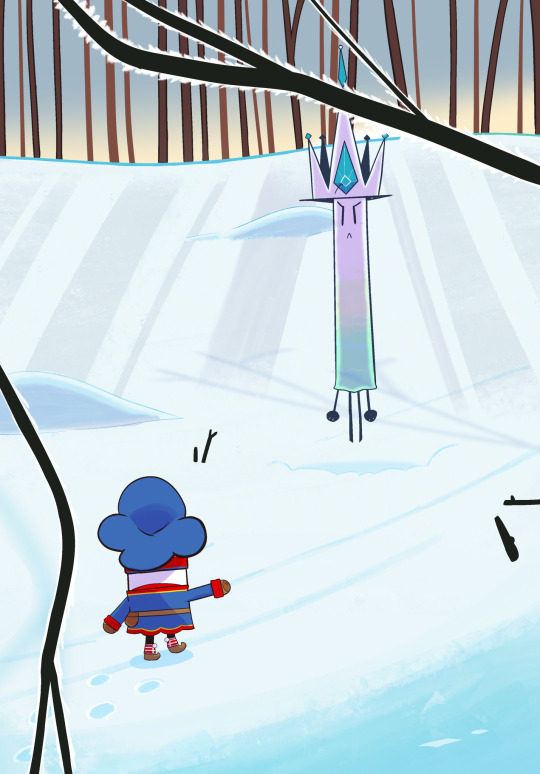
- The story’s setting is based in Northern Finland / Sápmi.
- The general story combines mythology, and folklore from Finland, Estonia, and from the Sami.
Plot ✧
Mihkku is a ice crystal who lives in small village with his mother. He goes into the forest one day, to find a strange creature in need of help.

Folktale in the universe ✧
“Villagers, and townsfolk alike said if you ever find a feather, gleaming like the stars, you’d be given good fortune, for generations to come. Those feathers belong to a magnificent pillar named Násti. Said to be descendent of the sky and earth, a goddess of the stars and the galaxy. She pinned each star into our sky, and care for all her stars, like a mother bird would care for her chicks. To prevent the sky from falling, she has a special star that follows her no matter what. This star also helps her stars never get lost when traveling around the world. They call it “The North Star”.
“Many gods that were stunned by her beauty, asking for her hand in marriage. Neither the warmth of the Sun, or the magesty of the Moon, did not sway the pillar. But came Guovssu, ruler of the Guovssahas / Lights. He rules the spirits of the skies, helping lost spirits of the lands return to the skies. She fell in love with the pillar at first sight when he found one of her lost stars, and accepted his engagement.”
“Preparing for the wedding, she waited for there lover to return from there journey in the north. Many seasons passed, and nothing was ever found of him. The pillar was struck by grief, she did not tend to her stars, each one withering away like there heart. Legends say each withered star created stardust, and those tears mixed together created the Milky Way. But no one knows where the beautful pillar is today, nor her lover. Some say every star will continue to wither and die with her heart until she finds her true love.”
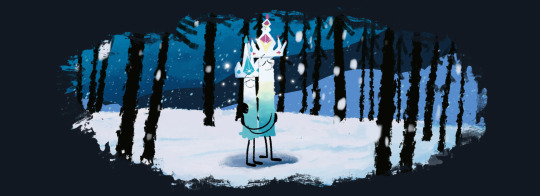
Chracaters ✧
Násti [x] Guovssu [x] Mihkku [x]

Trivia ✧
• Nasti and Guovssu’s relashonship is based on the Estonian Milky Way myth, of how the Milky Way was created
• Násti, Guovssu, and there species are Sampo. A magical device or object in Finnish mythology that grants the person who finds it luck and wealth. The Sampo has also been interpreted as a world pillar, and connected to the North Star. Inspiration for Nasti and Guovssu designs are also a mix between the Estonian & Finnish Creation Myths about the world pillar, as well as light pillars.
About Násti:
• Násti having ‘feathers’, and her relashonship with the stars “like a mother bird would care for her chicks” is a reference to the goddess of birds Lindu from the same Estonian myth.
- The Milky Way in Finnish Mythology is called "The Pathway of the Birds” (Linnunrata) (one of her forms is a bird)
About Guovssu:
• While being based on light pillars, they’re mainly based on the Northern Lights.
- In Finland ‘revontulet’ or ‘fox fires’ happen when foxes run across the sky and brush there tails against the mountains/snow, creating the northern lights. (What his animal form is)
- The Sami believed that the northern lights were the souls of the dead. If you disrespected the lights (whistle, wave, make any loud noise), it will bring bad misfortune/kill you.
About Mihkku:
• The main protagonist, Mihkku, is Sámi. So names are from his prospective:
- Guovssahas means “northern lights/aurora borealis” or “the light you can hear” in Nothern Sami
- Guovssu is the name for ‘morning, daylight, evening, twilight’, while Násti means ‘star’ in Northern Saami

#made this post a long while ago#object shows#osc#osc art#object show community#object oc#object ocs#long post
6 notes
·
View notes